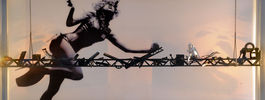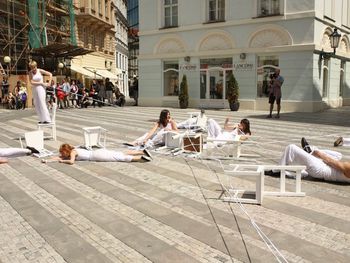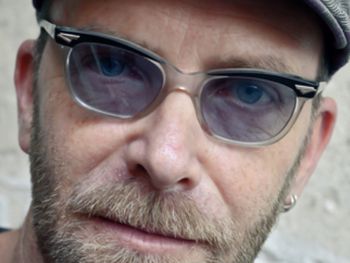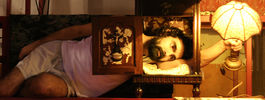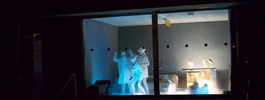
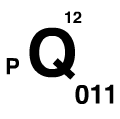
2015 » Sweden » Section of Countries and Regions
| Curator: | Anders Larsson |
| Authors of Theme: | Zofi Nilsson, Johan Mansfeldt |
| Designer / Architect of exhibition: | Zofi Nilsson |
| Institution: | Svensk Teaterteknisk Förening - STTF |
Antigone – a theatrical collaboration between Swedish and Tanzanian practitioners
What unites us?
What divides us?
Where lies our common ground?
What is our common language?
These questions had to be asked over and over again when we staged Sophocles’ classical play Antigone as a collaboration between the Gothenburg City Theatre and the Tanzanian theatre group Parapanda.
In the autumn of 2011, a group of Tanzanian actors came to Gothenburg to start rehearsing Antigone with a group of Swedish actors. After a month of rehearsals and workshops, the whole ensemble and artistic team travelled to Tanzania to continue working. The performance had its debut in Dar es Salaam.
The exhibition tells the story of this collaborative effort among theatre practitioners from very different performative backgrounds and experiences to create a performance with different languages on the basis of European theatre theories and East African narrative and musical theatre.
What are the challenges and possibilities when a group of Scandinavian and East African theatre professionals join to perform a text written 2,400 years ago in ancient Greece? Not only did we have to overcome the language barriers amongst ourselves, but the play was also performed in both Swahili and Swedish with subtitles in English in order to respect our native tongues and cultures.
As a theatre designer, how does one approach not only a performance but also a collaboration across national boundaries? How does one find a common imagery and visual signals that every human being can relate to, both as performers and as audiences, regardless of geographic birthplace?
My response to these questions and meetings gave rise to a scenography in which the central theme was a giant sculpture of a human face coming out of the ground.
It could literally be Antigone’s dead brother Polynices, whose denial of a funeral sets the drama in motion.
It could also act as a hill for the actors to sit and stand on, or even to caress or hit.
This turned out to be something that everyone of us could relate to. When an actor climbed up on the face and stood on its mouth, there was no doubt of the meaning, no matter what culture or history we came from.
Since I had made the sculpture using a cast of my own face, I also made myself the subject of the set. This is very different from most projects, where the theatre designer can hide behind the final production and in some way escape responsibility.
In a way, the design was a scenographic statement of participation – to take responsibility in this political cooperation involving many different views of the world and very different possibilities.
The result was a unique project with a strong visual statement about being human – in ancient Greece, in urban Sweden and in developing Tanzania, which today is one of the top 10 emerging economies in the world.
